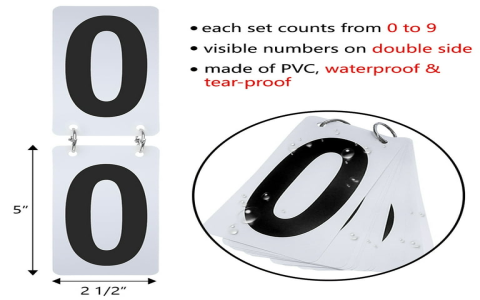A tennis scorecard is a crucial document used to officially record the progress and result of a tennis match. It provides a standardized method for tracking points, games, and sets for both players or teams involved.
Essential Components of a Tennis Scorecard
A standard tennis scorecard typically includes the following sections:
- Player Information: Names of the players or teams. Often includes seeding or ranking if applicable.
- Match Details: Space for the date, tournament name, round, court number, and start/end times.
- Umpire/Official Information: Name of the chair umpire and other officials, if present.
- Scoring Area: This is the core of the scorecard. It’s usually a grid divided into sets. Within each set, there are columns or boxes to mark games won by each player. There’s also a system to track points within each game (e.g., 15, 30, 40, Ad, Game).
- Server Indication: A method to mark which player is serving each game, often an “S” or a checkmark next to the server’s game box. This is critical for verifying the correct serving order.
- Tie-Break Scores: A dedicated section to record points if a set goes to a tie-break.
- Set Scores: Clear indication of the games won by each player per set.
- Final Score: The overall match result.
- Signatures: Lines for players and/or the umpire to sign, verifying the score’s accuracy.
- Notes/Remarks: Space for recording any code violations, time violations, medical timeouts, or other significant events during the match.
How to Use a Tennis Scorecard
Recording the score accurately requires attention to detail:

- Before the Match: Fill in player names, match details, and the umpire’s name. Indicate who serves the first game.
- During the Match:
- Points: As each point is won, it’s marked in the current game’s section for the respective player. The progression (0, 15, 30, 40, Ad) is tracked.
- Games: Once a game is completed, the game score is updated for the set (e.g., 1-0, 1-1). The server for the next game is typically indicated.
- Sets: When a player wins enough games to secure a set (e.g., 6 games with a margin of two, or 7-5, or via a tie-break), the set score is recorded.
- Tie-Breaks: If a set reaches 6-6 (in most formats), points in the tie-break are recorded individually until a player reaches 7 points with a two-point margin (or continues until a two-point margin is achieved).
- After the Match: The final score is clearly written, and the scorecard is reviewed and signed by the relevant parties.
Importance of Accurate Scorekeeping
Official Record: The scorecard serves as the official, undisputed record of the match.
Dispute Resolution: It is the primary reference in case of any disagreement regarding the score.
Fairness and Integrity: Ensures the match is conducted according to the rules and that the correct player is credited with points, games, and sets.
Match Analysis: While basic scorecards focus on the score, more detailed versions can help players and coaches analyze performance patterns.
Understanding and correctly maintaining a tennis scorecard is fundamental for players, coaches, and officials to ensure the smooth and fair conduct of a tennis match.




















